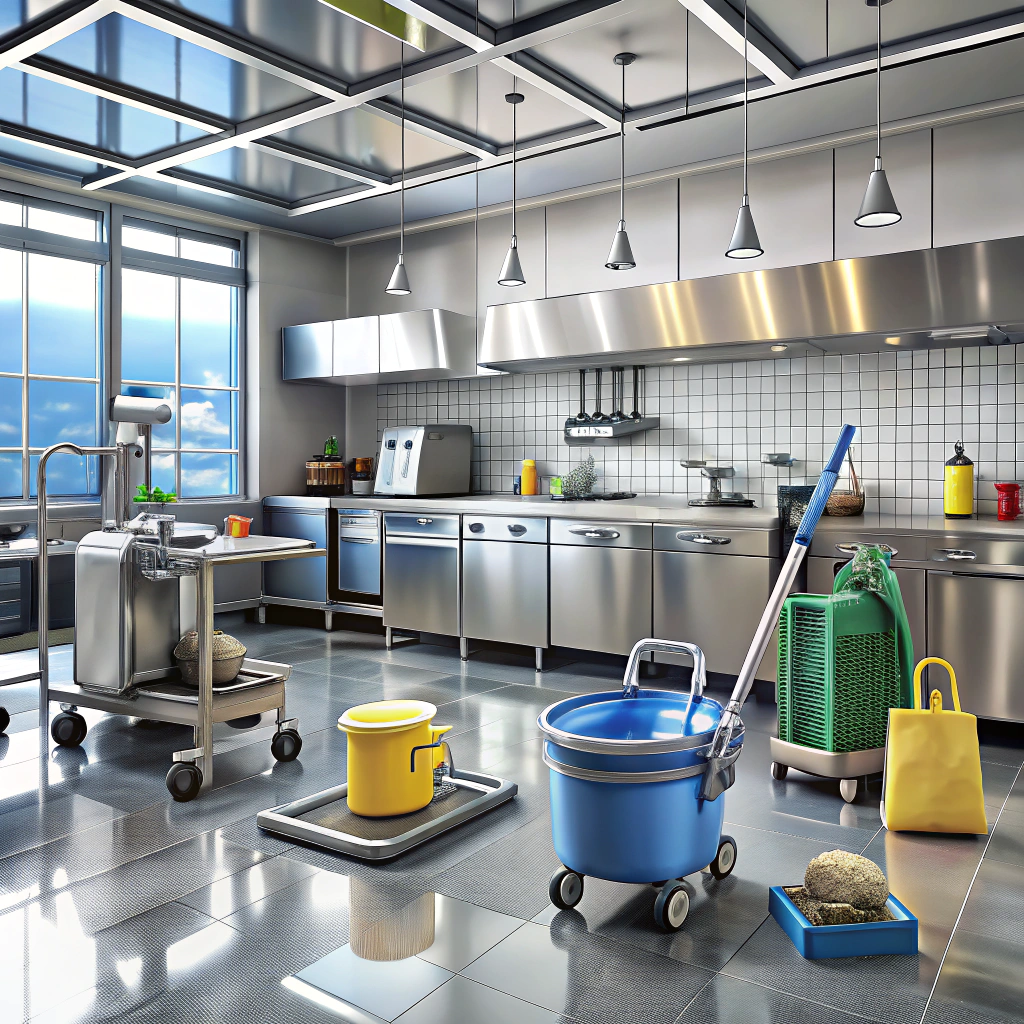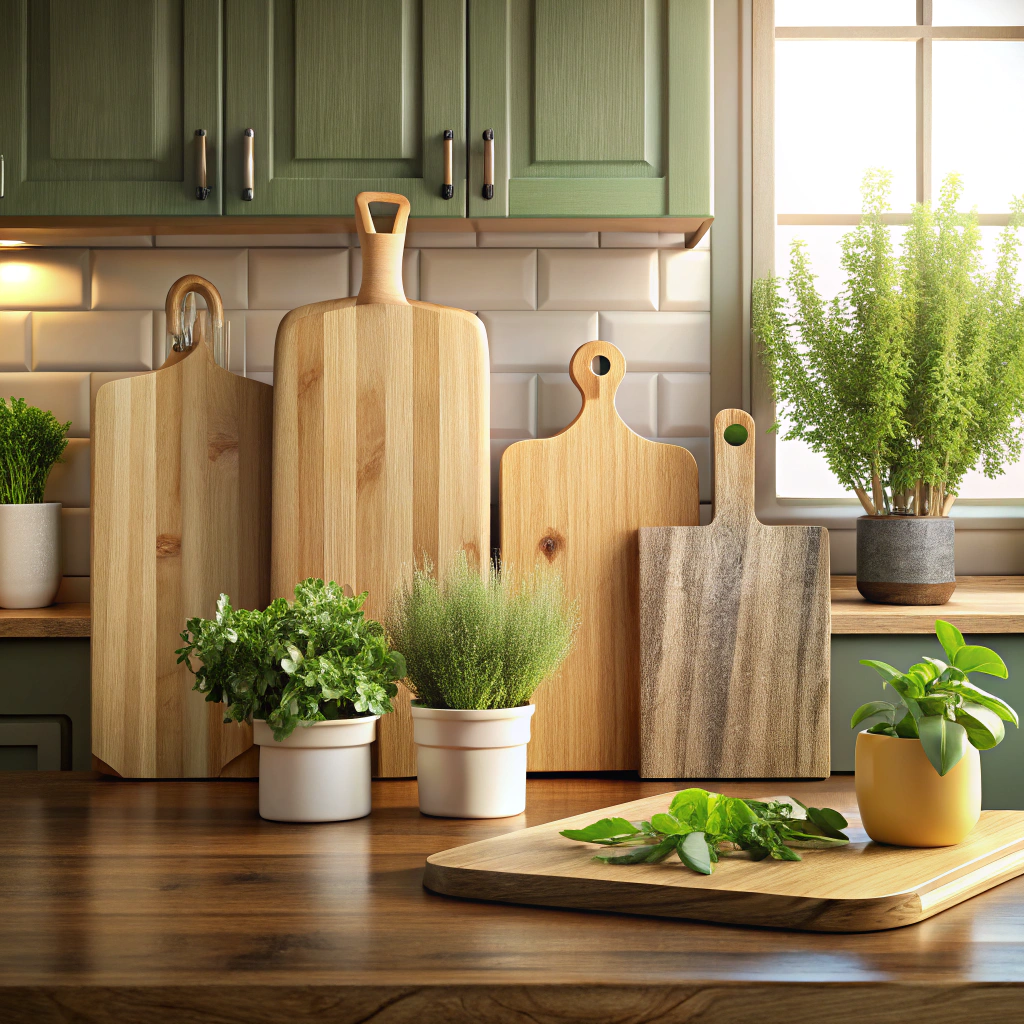Last updated on
Discover essential tips for effective commercial kitchen cleaning to maintain hygiene and safety, while keeping your kitchen spotless and ready for business.
Ever feel like your commercial kitchen leads an exhilarating double life: one moment glistening, the next consumed by organized chaos? Fear not, culinary crusader! Whether it’s those persistent grease spots or the corners that seem to spawn their own ecosystems, tackling a commercial kitchen’s cleaning needs doesn’t have to be an epic saga. This guide will light your path through the labyrinth of equipment, meticulous schedules, and expert-approved products. With daily, weekly, and monthly checklists and everything from HACCP-friendly practices to wall-scaling techniques, consider this your treasure map to a sparkling kitchen paradise. Get your mop and humor ready—you’ll need both!
Key takeaways:
- Use heavy-duty degreasers for tough grease removal.
- Establish daily, weekly, and monthly cleaning schedules.
- Clean corners with angled brushes and steam cleaning.
- Implement HACCP practices for food safety compliance.
- Choose non-slip cleaning products to avoid accidents.
What's Inside
Equipment for Commercial Kitchen Cleaning

When it comes to tackling grease and grime, nothing beats the right arsenal. Commercial kitchens are like battlegrounds, and your cleaning equipment is the cavalry. Prepare for combat!
First up, heavy-duty degreasers. They’re the superheroes for dissolving stubborn layers of grease on griddles, ovens, and stovetops. Next in line, industrial-grade steam cleaners. They make fighting bacteria look like child’s play. High heat meets high hygiene!
Don’t forget about power washers, which are perfect for floors and walls that need a serious bath. Just picture Cinderella with a pressure washer instead of a mop—same magic, less singing.
And then there’s your trusty microfiber cloths and mops. Not just any cloth, these are knights in shining armor for lint-free, streak-free finishes. They’ll leave your surfaces sparkling without putting micro-scratches in the background score.
For those hard-to-reach places, extendable wands are like Harry Potter’s broom. Just watch out for low-flying pots and pans! And finally, have some durable rubber gloves on hand—or rather, on hands—because manual labor is still the unsung hero of clean kitchens everywhere.
Now, if only we could train a robot to do it all—then we’d really be cooking!
Establishing a Cleaning Schedule
Getting organized with a cleaning schedule is like telling your kitchen gremlins when it’s time to hit the showers. You don’t want surprise odors joining the dinner rush.
Segment tasks into daily, weekly, and monthly rituals. Think of it as the holy trinity of cleanliness. Each day, wipe down counters, sanitize surfaces, and bid farewell to food crumbs like they’re overstaying their welcome.
Weekly duties focus on deeper cleaning: oven grates, fridge seals—you know, places even Sherlock might miss. Monthly tasks? They’re the grand finale. Exhaust hoods and air vents need love too. Plan it like you’re hosting a clean-fest with special guests like…. okay, just your own team, but make it fun!
Lastly, ensure everyone knows their roles. It’s not a luxury spa day; hands on deck, all hands clean.
Daily Kitchen Cleaning Checklist
Think of the daily cleanup like brushing your kitchen’s teeth. It prevents plaque buildup (or, in this case, grime that could cook itself into tomorrow’s lunch special). Here’s what should get scrubbed, polished, and shined in your daily ritual.
All countertops? Wipe them down with a food-safe disinfectant. You want clean surfaces, not a bacteria petri dish.
Oh, and don’t forget those cutting boards. They call them cutting boards, not “breed-a-new-lifeform boards” for a reason. Give them a good wash.
Chrome be damned; your stove tops and ovens need love too. Scrape off any leftover food bits before they form their own union.
Sweep and mop floors like they’re hosting a dance-off. No one likes the sticky dance.
A clean grill cooks better, or at least keeps the fire alarms from joining happy hour. Remember to clean grill tops and empty grease traps.
Give sinks a sparkle. They handle all the dirty work; show them some gratitude. Rinse and sanitize to keep them willing workers.
Trash it! Empty bins and clean them out to keep the inspector and your nose happy. A little deodorizer spritz can’t hurt, either.
Ventilation hoods are like your kitchen’s nose, catching all those delicious scents (and the grease you don’t want). Daily cleaning keeps them breathing freely.
It doesn’t have to be a cleaning opera, just an efficient, well-rehearsed act. Peel, polish, repeat. Your kitchen will thank you, and maybe even wink in appreciation.
Weekly Kitchen Cleaning Checklist
Ah, the weekly ritual—the perfect blend of elbow grease and zen meditation, where you become one with the mop. First up, check those fridge seals and gaskets. They hide more dirt than a teenager’s diary. Keep them squeaky clean to maintain good air circulation and food safety.
Next, turn your sights on ovens and exhaust hoods. They can build up greasy grime faster than a raccoon can find your trash. Using a degreaser will help. Don’t skip the deep clean on these as it reduces fire hazards.
Now let’s visit your happy little corners, those often-forgotten areas under sinks and behind appliances, where dust bunnies and mystery crumbs love to congregate. A trusty vacuum or high-reach duster will be your best friend here.
Disassemble and clean juicers, blenders, and other kitchen gadgets. They’re the daredevils of gadgetry, often overlooked but quite the party animals when it comes to bacteria build-up.
Finally, inspect any filters—air, water, you name it. Change or clean them as necessary. Think of them as the kidneys of your kitchen, filtering out the undesirables. Keep these tips at heart, and you’re on your way to a sparkling, efficient workspace. Enjoy the clean vibes!
Monthly Kitchen Cleaning Checklist
Time to roll up those sleeves and tackle tasks often overlooked. Start with vent and exhaust fan cleaning. These hardworking parts trap grease like a pro, but need a monthly detox. Think of it as a spa day for your kitchen’s lungs.
Next, let’s give the refrigerators and freezers some love. They’ve been working non-stop keeping your produce chilled. Clean the coils and check the seals. No need for drafts in there unless you’re storing penguins.
Take stock of your inventory. Toss expired items, because, let’s be honest, mystery containers aren’t part of the menu.
Don’t forget the deep clean on ovens, fryers, and grills. Those bits of charred history might seem insignificant, but they’re not adding any crispy credibility to your cooking.
Finally, consider the walls and ceiling. That’s right, dust and grease have had a field day up there. Channel your inner superhero, cape optional, and send them packing.
And voila, your commercial kitchen is ready to face another month of culinary adventures in spotless style!
Cleaning and Disinfection According to HACCP
Got a kitchen that’s dirtier than a dog after a muddy walk? Fear not, heroes of hygiene! Adhering to HACCP standards is your cape.
First, identify critical points where contamination could occur. I’m talking about those sneaky spots where raw chicken meets veggies, the Romeo and Juliet of kitchen tragedies.
Monitor your temperatures like a hawk. Foods need to be in the safety zone, the Goldilocks of temperatures, not too hot and not too cold. Opt for thermometers, because eyeballing it won’t cut it.
Clean surfaces with rigor and regularity. Use an EPA-approved disinfectant like you’re a germ-fighting superhero. Bacteria won’t know what hit them.
Document everything. Yes, even that time Dave spilled spaghetti sauce all over the counter. Record the cleaning schedules, temperatures, and any food incidents like it’s the next great novel.
With these steps, your kitchen will sparkle more than a vampire in sunlight. Keep those microbes at bay and remember: a clean kitchen is a happy kitchen with considerably fewer lawsuits.
Efficient Corner Cleaning Strategies
Corners, the black holes of the kitchen, are where food particles mysteriously vanish. Tackle them like a pro with a few smart strategies. First, employ a good old toothbrush—a secret weapon against stubborn grime. It’s like dental hygiene but for your walls.
Next, use angled brushes for a cleaner swipe. These brushes get into nooks better than a nosy neighbor peeking over a fence.
When mopping, twist and turn like you’re at a dance-off. Circular motions ensure no corner goes untouched. For high corners, a microfiber cloth on an extendable rod is your trusty skyhook.
Finally, don’t underestimate the power of steam cleaning. Steam is like a superhero cape that vanquishes dirt without chemicals. It’s eco-friendly and effective—like a green smoothie for your floors.
Techniques for Cleaning Walls and Ceilings
Cleaning walls and ceilings in a commercial kitchen is essential. Grease, dust, and the occasional mystery splatter cling to every surface, so let’s get inventive.
Start with a telescopic pole and a sponge mop. It’s like a magic wand for kitchens. Dip the sponge in a cleaning solution, and wave it over marks and stains. Your arms might actually get more workout than a yoga session.
For stubborn grease, use a degreaser specifically designed for commercial kitchens. Spray, wait, scrub, and watch the gunk disappear. It’s oddly satisfying.
Ceiling vents are often neglected, and frankly, nobody likes suffocating in a steamy kitchen. Remove and clean these regularly. Buy your vents a nice bubble bath every now and then—they deserve it.
Don’t forget the power of steam cleaning. It can dissolve grime faster than you can say “extra guacamole.”
And remember: gravity is both friend and foe. Always work from top to bottom, so you’re not wiping dust and debris onto freshly cleaned areas.
Happy cleaning, and may your ceilings be cobweb-free and your walls less Jackson Pollock!
Floor Cleaning and Safety Tips
Floors get more action than a dancefloor at a wedding. Keeping them clean is crucial to safety and sanitation.
Consider these tips to keep your kitchen floors spotless:
- Choose non-slip cleaning products. Avoid turning the floor into a slip-and-slide. Everyone loves fun, but maybe not in a kitchen with sharp knives involved.
- Clean spills immediately. Spills can become sticky or develop into mini roller coasters if left unattended.
- Use a degreaser. Grease can build up, turning your floor into the next wonder of the world: the Greasy Slip Mountain.
- Sweep before mopping. Because let’s face it, no one wants a crunchy mop.
- Don proper footwear. Non-skid shoes are fashion-forward in the land of safety. Think of them as the glass slippers of the kitchen world.
- Maintain rugs and mats. These unsung heroes help prevent more water on the floor than would appease a family of ducks.
- Schedule regular deep cleans. A floor spa day keeps them happy and grime at bay.
Safety first, and your kitchen will sing!
Suitable Cleaning Products and Tools
When it comes to tackling the grease monsters lurking in commercial kitchens, you need the right arsenal. Let’s face it, your regular dish soap won’t cut it when you’re dealing with industrial-sized messes.
First up, degreasers are your trusty sidekicks. They’re perfect for combating the layers of grime that somehow get into every nook and cranny of your kitchen equipment. They’re like a spa treatment for your oven, minus the cucumber slices.
Disinfectants are the superheroes of hygiene. Whether it’s a simple spray or powerful wipes, they help maintain the pristine and germ-free environment that keeps your health inspection anxiety at bay.
Don’t skimp on microfiber cloths either. They’re the unsung heroes of wiping surfaces. Gentle on stainless steel yet ruthless on grime, these wonders leave no streaks behind—like ninjas, but for cleaning!
You’ll also need brooms and mops, obviously. But opt for heavy-duty ones. You want to sweep up crumbs, not break a sweat.
Scrub brushes with long handles can reach the awkward places where the gremlin-sized grease blobs like to hide. Think of them as extension wands for cleaning magic.
And lastly, invest in a decent vacuum with a HEPA filter if you can. It’s not just for floors; ceilings and walls collect dust, too. Yes, dust does not believe in gravity.




